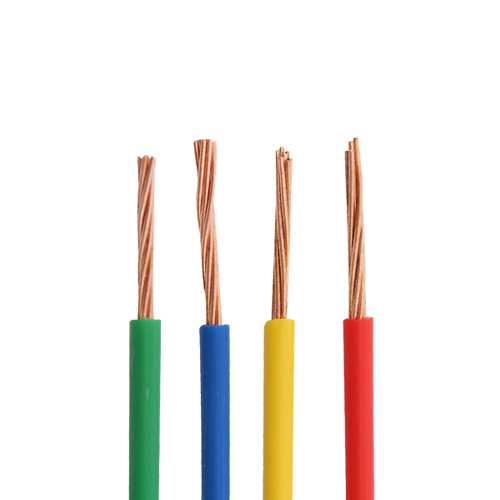Power Cable Structure (2)
4. Insulation
Insulation means that the insulating material is wrapped around the conductor with different thicknesses according to the requirements of its withstand voltage level, which plays the role of isolating the charged body from other components. The insulating layer material has good electrical insulating properties, mainly in the size of the withstand voltage. Generally speaking, the thicker the insulating layer of the same quality, the higher the withstand voltage.
Insulation should also have certain mechanical and physical properties and processing and manufacturing process properties. For example, in the manufacture of low-voltage cables, although a very thin insulation layer can be used from the point of view of electrical performance, it is slightly thicker in terms of mechanical properties and processing technology, because the insulation layer is too thin, it is difficult to process and easily damaged. When the cable is energized, the conductors heat up. Therefore, an ideal insulating material should have good insulating properties and good thermal conductivity.
Insulation Under the action of electricity and heat, over time, the interior will change and the insulation performance will decrease. Cross-linked polyethylene (XLPE) has excellent electrical insulating properties. After cross-linking, its heat resistance and mechanical properties are greatly improved. It is the ideal insulating material at present.
After the conductor is coated with an insulating layer, it is called an insulating core. The insulation on each wire is called core insulation or simply core insulation.
5. Protective layer
The jacket is the protective part of the outer layer of the cable. Depending on the purpose of the cable, the environment in which it is used, and the insulation, there are many different types and structures of protective layers that serve different functions. The protective layer of cross-linked cable mainly includes bare sheath and armor. In the case of no mechanical external force, the bare sheath is used, that is, a layer of plastic is directly extruded outside the insulating iron core. If it is directly buried or subjected to a certain mechanical external force, it needs to be armored with metal tape; when 110kV high-voltage cross-linked cables or other cables are buried underwater, a waterproof protective layer should be provided, and a layer of lead sheathed aluminum casing or aluminum should be added. Plastic composite waterproof layer.
Since it cannot withstand mechanical damage, it also needs to be covered with steel wire and steel strip. Steel wires and steel strips are easy to corrode, and lead and aluminum sheaths are also easy to corrode in harsh environments. Therefore, it is necessary to coat various anti-corrosion materials such as asphalt, jute, and plastic. These are collectively referred to as the outer sheath. The steel wire and steel tape are called the armor layer, and the asphalt, jute and plastic are called the protective layer. In addition, in the conductor, insulating layer, cable core or outer layer of the wire and cable, in order to prevent the interference of external electromagnetic waves or play the role of a uniform electric field, materials such as metal strips, wires or semiconductor plastics are also covered. These are called shields.
6. High voltage cable waterproof layer
The oil-paper cable is extruded with a metal sheath by a lead press and an aluminum press. Medium and low voltage cross-linked cables are generally used in chemically corrosive environments or underwater. However, high voltage cables are usually sheathed in metal. With the development of welding technology, people have more and more awareness of the reliability of corrugated aluminum sheathed cables. Each cable company adopts advanced argon arc welding technology and is equipped with ultrasonic and other online detection devices to ensure the sealing of welding.

